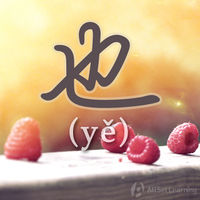|
|
| Line 36: |
Line 36: |
| | | style="color:#000;" | <div id="mp-tfa" style="padding:2px 5px"> | | | style="color:#000;" | <div id="mp-tfa" style="padding:2px 5px"> |
| | [[File:Chinese-grammar-wiki-ye.jpg|200px|left|也 (yě)]] | | [[File:Chinese-grammar-wiki-ye.jpg|200px|left|也 (yě)]] |
| − | It's a human need to find common ground when conversing. ''Oh, you're fine? I'm fine '''too'''!'' Yep, banal is this particular may seem, you know you do it too. Fortunately this is pretty simple to do in Mandarin, using the versatile adverb [[也]] (yě). There's actually a ton of stuff this little word can do, but you'll definitely want to start off with the simple "also" adverb. A word to the wise, though: pay attention to word order. Read more about 也 (yě) in '''[[the "also" adverb]]'''. | + | It's a human need to find common ground when conversing. ''Oh, you're fine? I'm fine '''too'''!'' (You know you do it too.) Fortunately this is pretty simple to do in Mandarin, using the versatile adverb [[也]] (yě). There's actually a ton of stuff this little word can do, but you'll definitely want to start off with the simple "also" adverb. A word to the wise, though: pay attention to word order. Read more about 也 (yě) in '''[[the "also" adverb]]'''. |
| | </div><!-- /FEATURED GRAMMAR POINT --> | | </div><!-- /FEATURED GRAMMAR POINT --> |
| | |} | | |} |
Revision as of 08:56, 24 March 2014
|
Your practical, free, comprehensive online resource for Chinese grammar.
2,125 articles and growing! If you'd like to help, please get in touch.
|
|
|
|
|
|
|
It's a human need to find common ground when conversing. Oh, you're fine? I'm fine too! (You know you do it too.) Fortunately this is pretty simple to do in Mandarin, using the versatile adverb 也 (yě). There's actually a ton of stuff this little word can do, but you'll definitely want to start off with the simple "also" adverb. A word to the wise, though: pay attention to word order. Read more about 也 (yě) in the "also" adverb.
|
|
|
Where to start?
|
With all this interconnected info on Chinese grammar, you be at a loss as to where to start. Here are some ideas:
|
|
|
|
|
|
|
|
So much to learn at this level! For example:
|
|
|
|
|
There are still plenty of finer points to work on at this level.
For example:
|
|
Textbook Friendly
|
How do we support textbooks? Try finding your own textbook in our list, and then seeing what it links to here on the Chinese Grammar Wiki.
Purchasing these books by clicking on the textbook references linked within this website will also help to support this project.
|
|
|
Referenced Throughout
|
To create this grammar wiki, AllSet Learning and its editor partners have made extensive use of various high-quality Chinese grammar reference materials. You can see the full list of references on our Chinese textbook grammar index page.
Purchasing these books by clicking on the grammar references linked within this website will also help to support this project.
|
|
About AllSet Learning
AllSet Learning is a Shanghai-based learning consultancy dedicated to helping foreigners better learn Mandarin Chinese. This wiki is maintained by John Pasden and the rest of the team at AllSet Learning. While many of the company's services are only available to clients physically in Shanghai, this wiki is open to the public through a Creative Commons license.
You can also find us on Facebook, on Twitter, and on Google+.
All content on this wiki © AllSet Learning, and may not be reproduced without attributions or used for commercial purposes.










